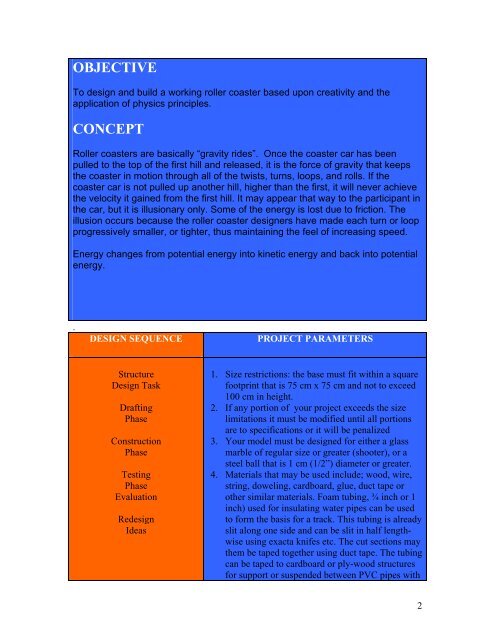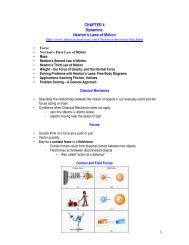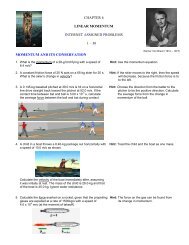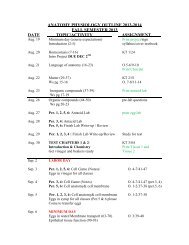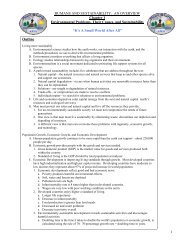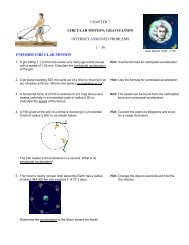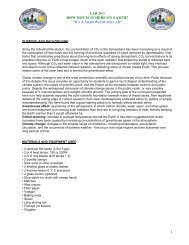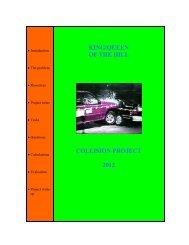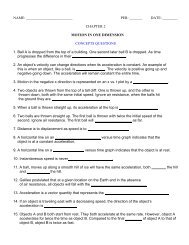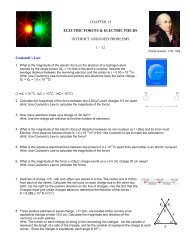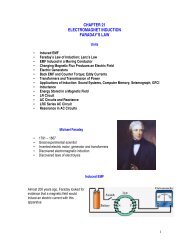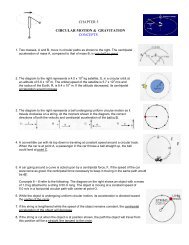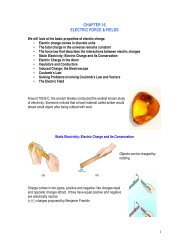Roller Coaster - Physics-matters.net
Roller Coaster - Physics-matters.net
Roller Coaster - Physics-matters.net
Create successful ePaper yourself
Turn your PDF publications into a flip-book with our unique Google optimized e-Paper software.
OBJECTIVE<br />
To design and build a working roller coaster based upon creativity and the<br />
application of physics principles.<br />
CONCEPT<br />
<strong>Roller</strong> coasters are basically “gravity rides”. Once the coaster car has been<br />
pulled to the top of the first hill and released, it is the force of gravity that keeps<br />
the coaster in motion through all of the twists, turns, loops, and rolls. If the<br />
coaster car is not pulled up another hill, higher than the first, it will never achieve<br />
the velocity it gained from the first hill. It may appear that way to the participant in<br />
the car, but it is illusionary only. Some of the energy is lost due to friction. The<br />
illusion occurs because the roller coaster designers have made each turn or loop<br />
progressively smaller, or tighter, thus maintaining the feel of increasing speed.<br />
Energy changes from potential energy into ki<strong>net</strong>ic energy and back into potential<br />
energy.<br />
.<br />
DESIGN SEQUENCE<br />
PROJECT PARAMETERS<br />
Structure<br />
Design Task<br />
Drafting<br />
Phase<br />
Construction<br />
Phase<br />
Testing<br />
Phase<br />
Evaluation<br />
Redesign<br />
Ideas<br />
1. Size restrictions: the base must fit within a square<br />
footprint that is 75 cm x 75 cm and not to exceed<br />
100 cm in height.<br />
2. If any portion of your project exceeds the size<br />
limitations it must be modified until all portions<br />
are to specifications or it will be penalized<br />
3. Your model must be designed for either a glass<br />
marble of regular size or greater (shooter), or a<br />
steel ball that is 1 cm (1/2”) diameter or greater.<br />
4. Materials that may be used include; wood, wire,<br />
string, doweling, cardboard, glue, duct tape or<br />
other similar materials. Foam tubing, ¾ inch or 1<br />
inch) used for insulating water pipes can be used<br />
to form the basis for a track. This tubing is already<br />
slit along one side and can be slit in half lengthwise<br />
using exacta knifes etc. The cut sections may<br />
them be taped together using duct tape. The tubing<br />
can be taped to cardboard or ply-wood structures<br />
for support or suspended between PVC pipes with<br />
2


